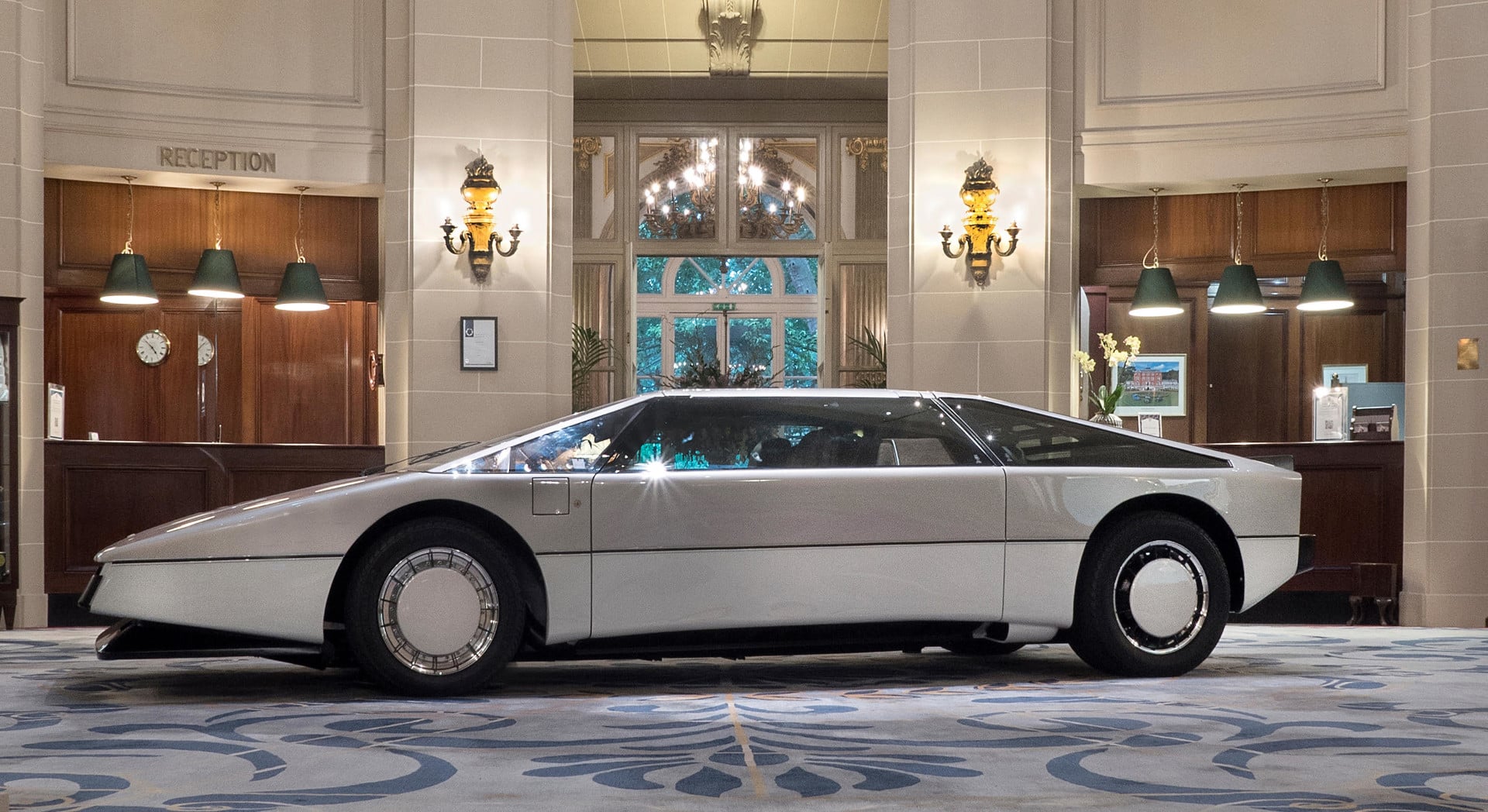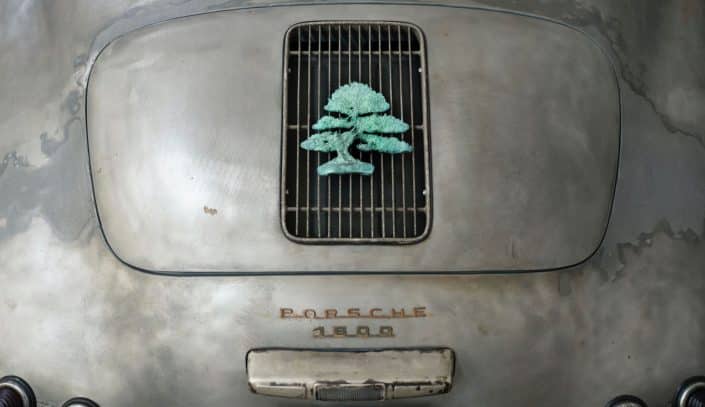Convocatoria final de inscripciones en los Royal Automobile Club Historic Awards 2022
Las nominaciones para los Premios Históricos del Royal Automobile Club 2022 cierran a las 5 p. m. del sábado 8 de octubre, por lo que tiene poco más de una semana para enviar sus sugerencias sobre lo mejor de lo mejor en el mundo del automovilismo histórico y los deportes de motor británicos.

1979 Aston Martin Bulldog
La gama de categorías refleja la amplitud del movimiento automovilístico histórico, y el Club busca celebrar las industrias artesanales, los eventos de base y los esfuerzos individuales, así como los “grandes nombres” en este sector.

Cualquiera puede nominar: las empresas pueden nominarse a sí mismas, a sus productos o a sus empleados, las organizaciones pueden nominar a sus eventos o personal, los entusiastas pueden nominar eventos maravillosos en los que han participado o visto, las personas pueden sugerir revistas o artículos en línea, programas de televisión o podcasts que han amado – o que han creado. Las candidaturas son gratuitas y se realizan a través de un sencillo formulario en on www.royalautomobileclubhistoricawards.co.uk.
El período de elegibilidad es del 1 de octubre de 2021 al 30 de septiembre de 2022 y los ganadores se anunciarán en una noche de gala de entrega de premios en la sede del club Pall Mall del Royal Automobile Club el 24 de noviembre.
Las nominaciones están invitadas en los siguientes categories:
- Colección: reconocimiento de los logros dentro del período de elegibilidad de museos grandes y pequeños o de colecciones de propiedad privada.
- Evento competitivo: tiene un amplio mandato que cubre todo, desde reuniones de carreras y rallies por etapas hasta subidas de colinas, pruebas de regularidad, series de carreras e incluso carreras individuales.
- Innovación: creada para premiar la iniciativa y la creatividad en el desarrollo de nuevos productos y servicios.
- Espectáculo de automovilismo: para eventos automovilísticos clásicos de todos los tamaños, sin elementos de competencia cronometrada. Los eventos elegibles incluyen concursos de elegancia, recorridos, reuniones de clubes y espectáculos de vehículos clásicos.
- Periodismo excepcional: para la mejor función impresa, digital o de transmisión.
- Esfuerzo personal: celebración de los logros individuales dentro del mundo histórico del automovilismo o del automovilismo.
- Restauración: reconocer la habilidad superlativa, la investigación y la sensibilidad a la historia de un vehículo que hace una restauración de clase mundial.
- Young Achiever: para esas estrellas en ascenso, de 18 a 30 años, que son el futuro de la industria automovilística histórica de Gran Bretaña.
Un elemento clave de los premios es el proceso de evaluación independiente, riguroso y experto. Cada categoría es evaluada por su propio jurado especializado cuidadosamente seleccionado con altos niveles de experiencia relevante.
En la noche de entrega de premios del jueves 24 de noviembre, el Club también entregará el Premio a la Trayectoria del Royal Automobile Club, en reconocimiento a una persona que ha realizado una contribución notable al legado del automovilismo y/o el automovilismo británico durante muchas décadas. El ganador del año pasado fue John Grant, presidente del British Racing Drivers Club.
Los premios son una continuación del pedigrí de 125 años del Club en el reconocimiento de los logros automovilísticos. Hoy, el Club presenta una serie de galardones reconocidos internacionalmente, incluidos el Trofeo Segrave, el Trofeo Torrens, la Medalla Simms, el Trofeo Dewar y el trofeo más antiguo del automovilismo: el Tourist Trophy.
Para más información de prensa, póngase en contacto con:
Karen Coe Karen.Coe@royalautomobileclub.co.uk Tel: 07540 725821
Jeremy Vaughan jeremy.vaughan@royalautomobileclub.co.uk Tel: 01372 229 604
Sobre el Real Automóvil Club
El Real Automóvil Club fue fundado en 1897 y su distinguida historia refleja la del automovilismo mismo. En 1907, el Rey Eduardo VII otorgó al Club su título Real, lo que selló el estatus del Club como la organización automovilística más antigua e influyente de Gran Bretaña.
Los primeros años del Club se centraron en promover el automóvil y su lugar en la sociedad, lo que se convirtió en eventos automovilísticos como el 1000 Mile Trial, que se celebró por primera vez en 1900. En 1905, el Club celebró el primer Tourist Trophy, que sigue siendo el más antiguo continuamente Compitió para el evento de deportes de motor. El Club promovió los primeros Grandes Premios de antes y después de la guerra en Brooklands en 1926 y Silverstone en 1948 respectivamente, mientras continuaba con la campaña por los derechos de los automovilistas, incluida la introducción de las primeras licencias de conducir.
Hoy, el Club continúa desarrollando y apoyando el automovilismo a través de la representación en la Fédération Internationale de l’Automobile (FIA) y la Fundación RAC mientras promueve sus propios eventos automovilísticos, incluida la London Motor Week del Club y el RM Sotheby’s London to Brighton Veteran Car Run.
El Club también otorga una serie de trofeos y medallas reconocidos internacionalmente que celebran los logros automovilísticos. Estos incluyen el Trofeo Segrave, el Trofeo Torrens, la Medalla Simms, el Trofeo Dewar y el trofeo más antiguo en el automovilismo por el que aún se compite en la actualidad, el Tourist Trophy.
@TheMotoringNews
@themotoringnews
Facebook.com/RoyalAutomobileClubUK
Royalautomobileclub.co.uk/motoring
















































